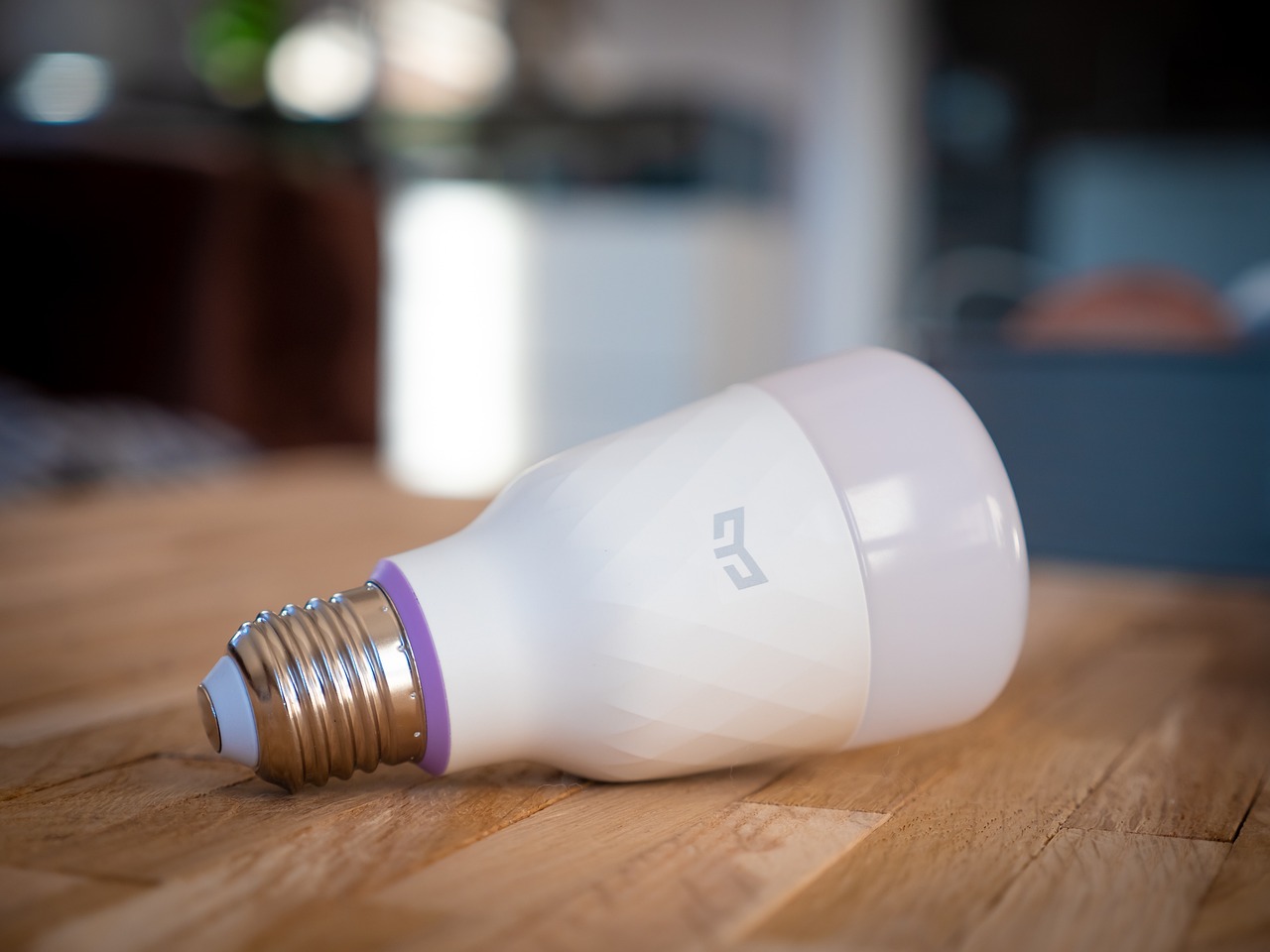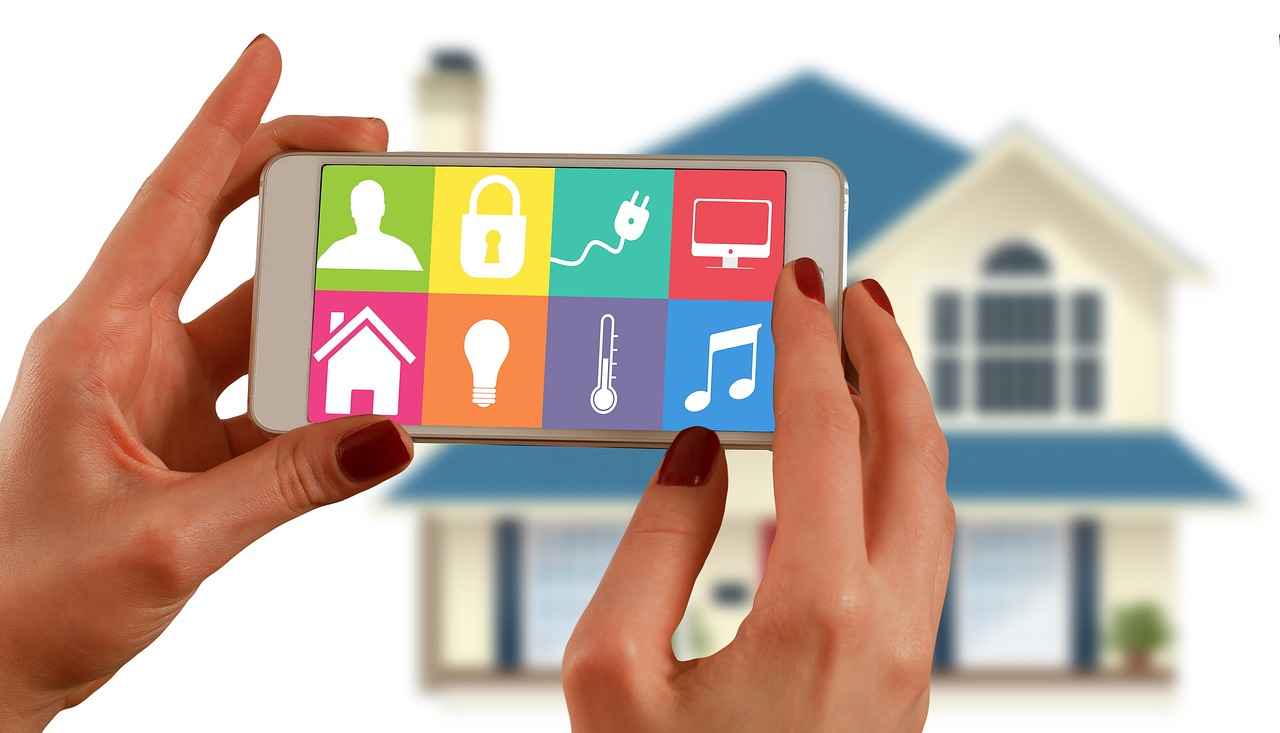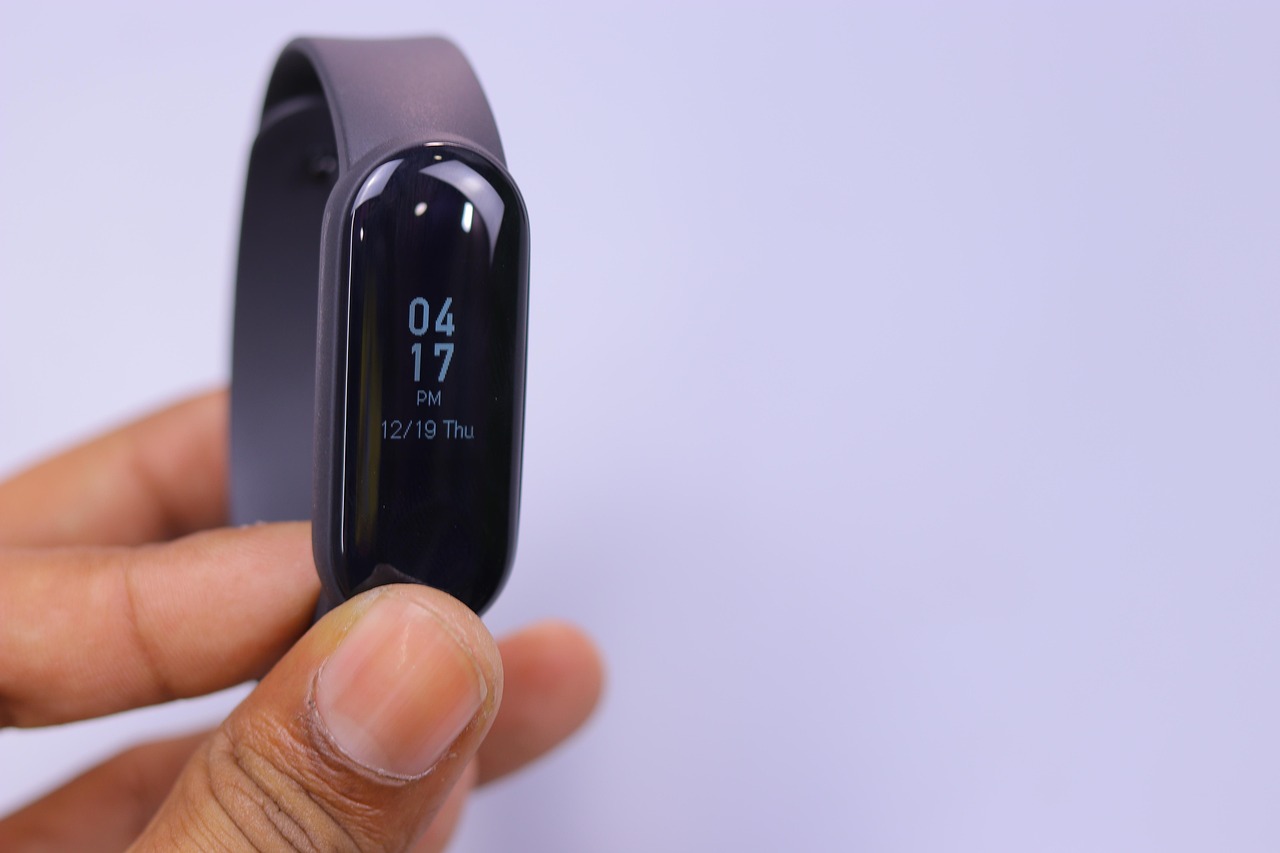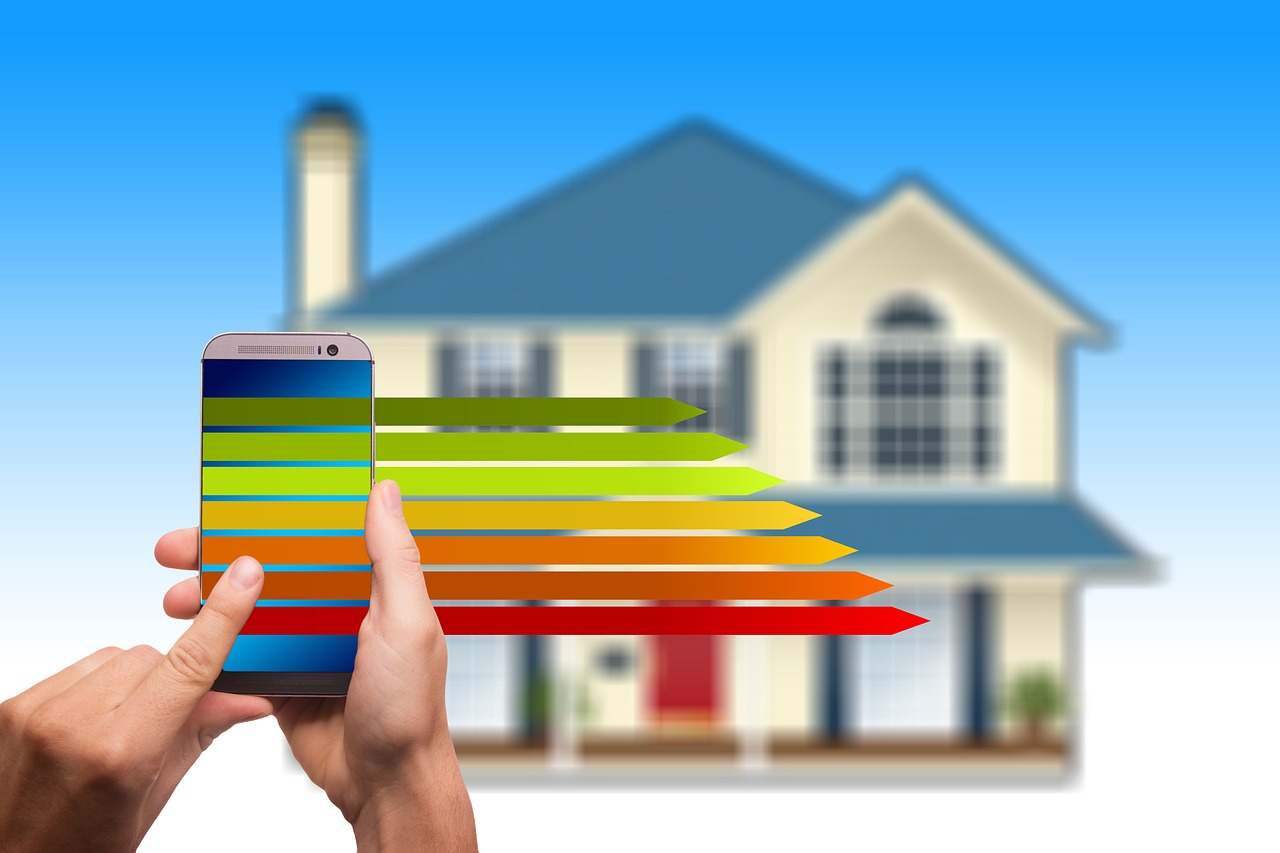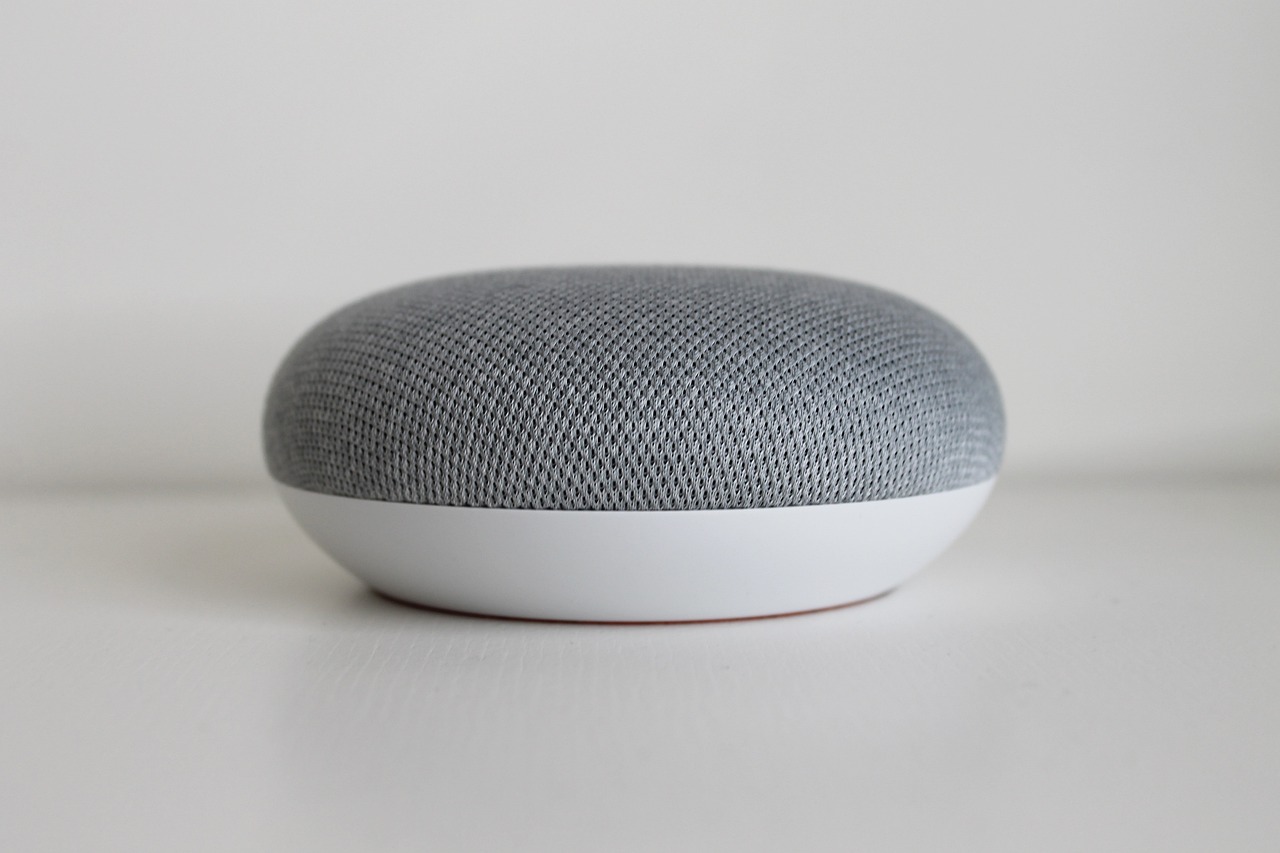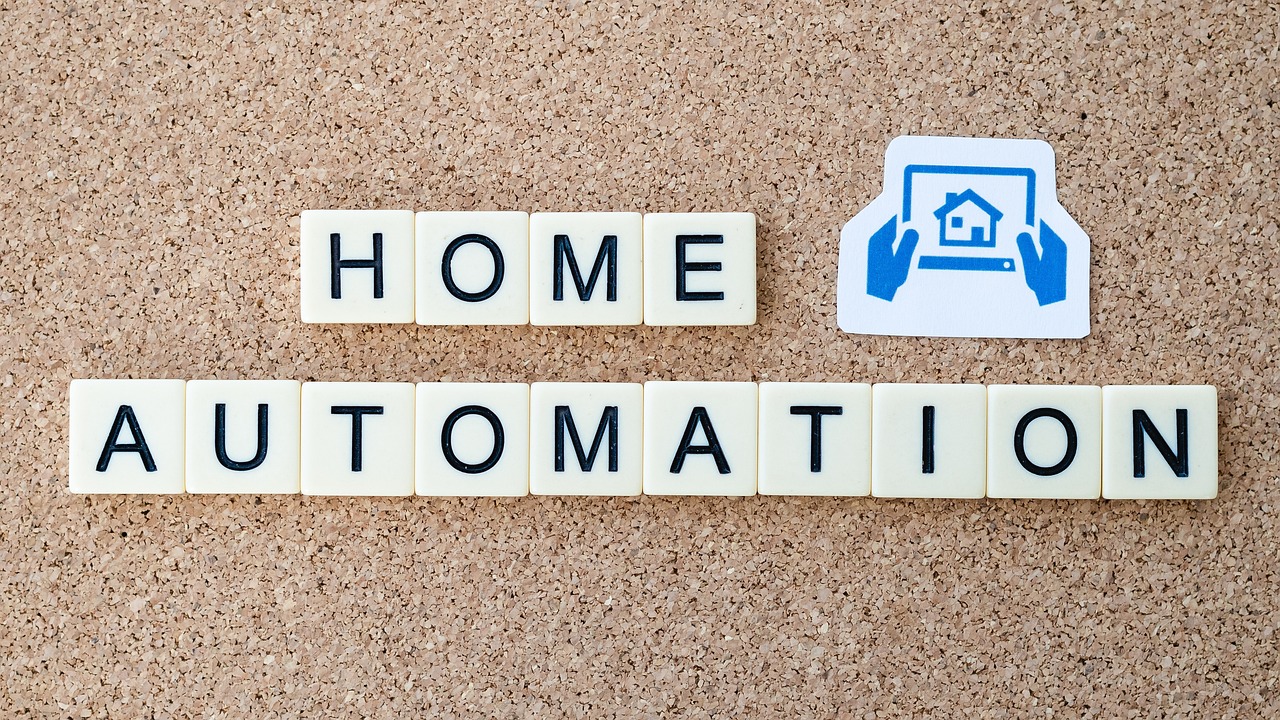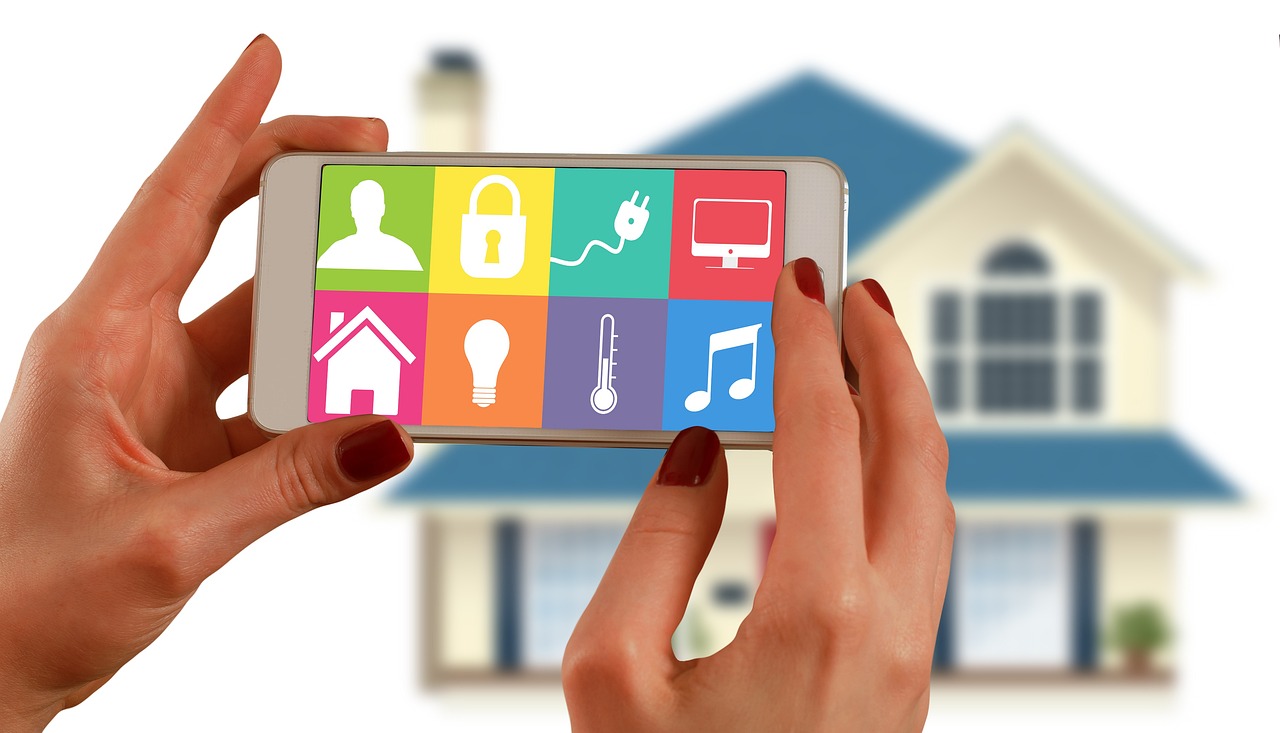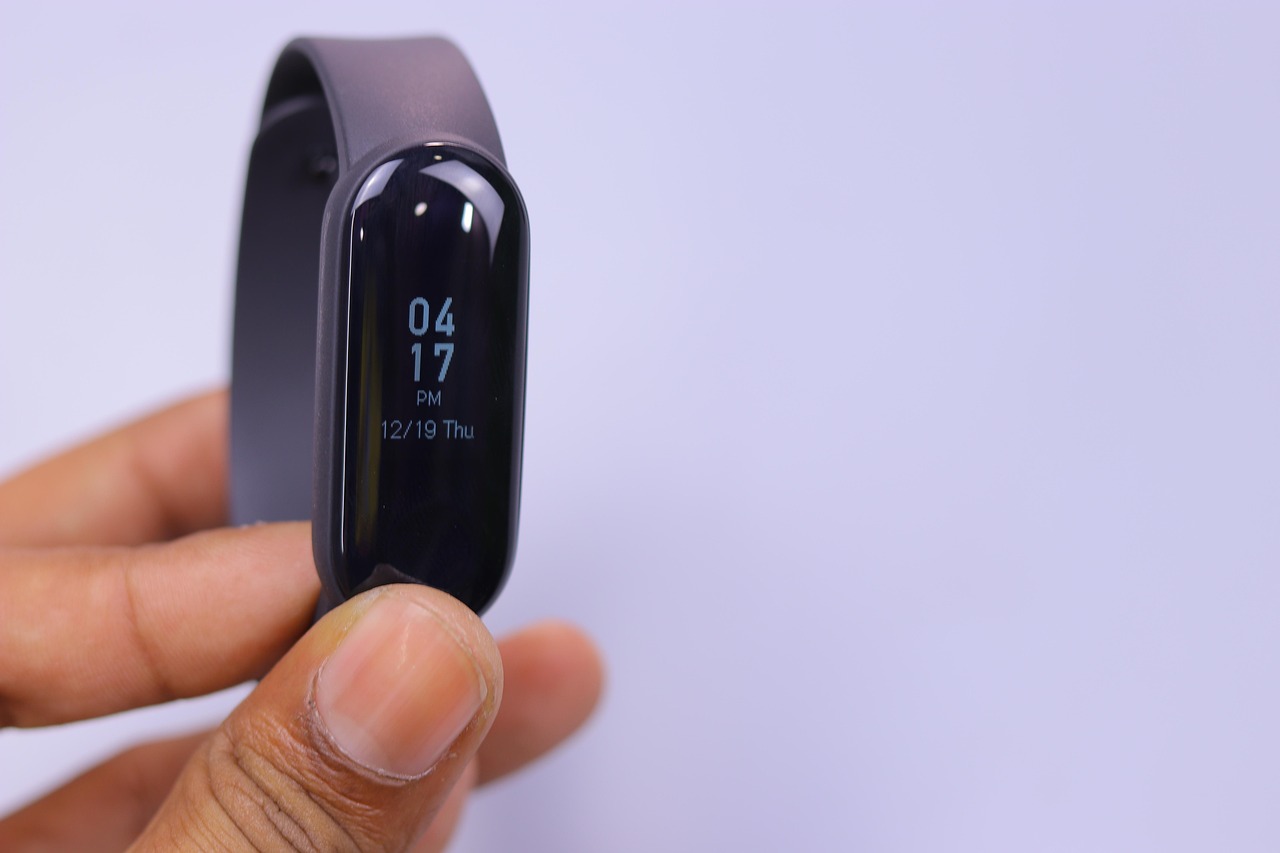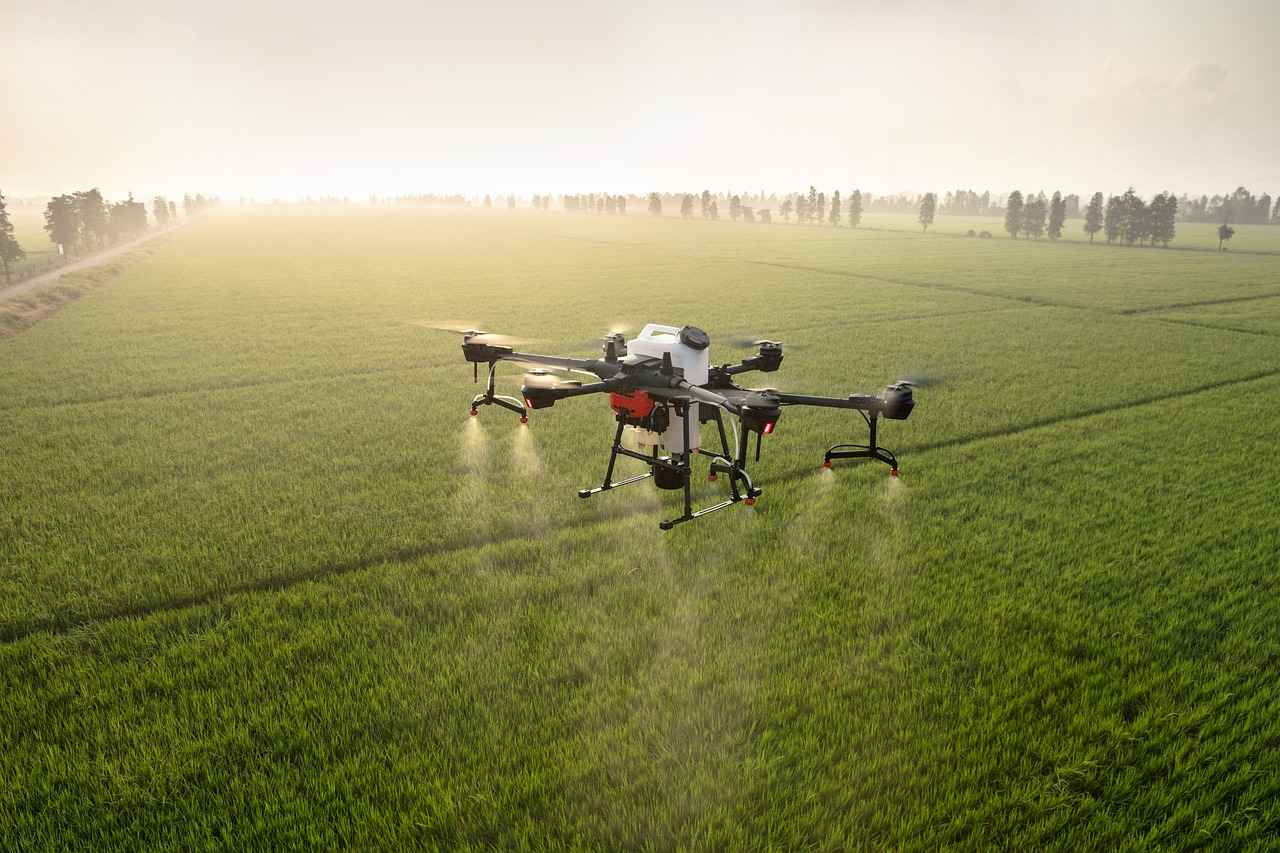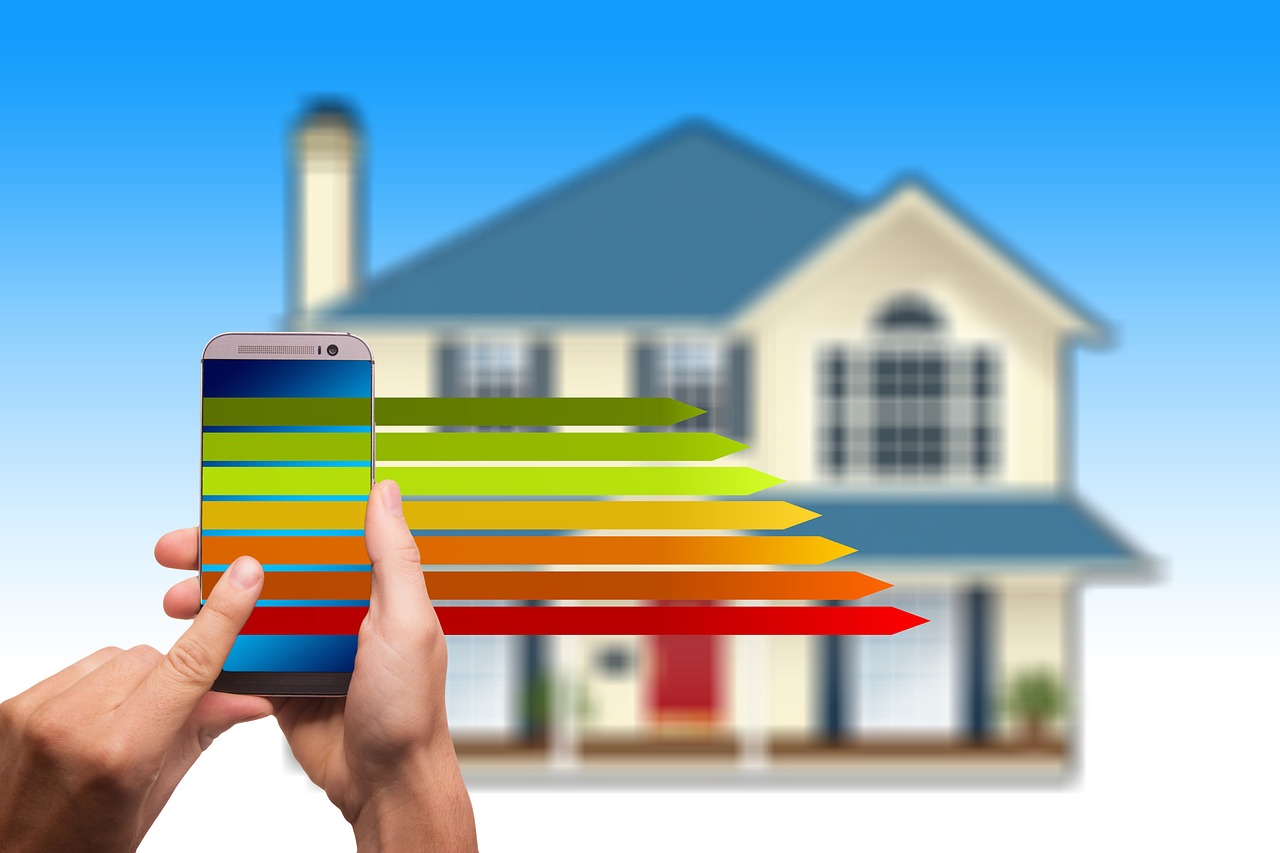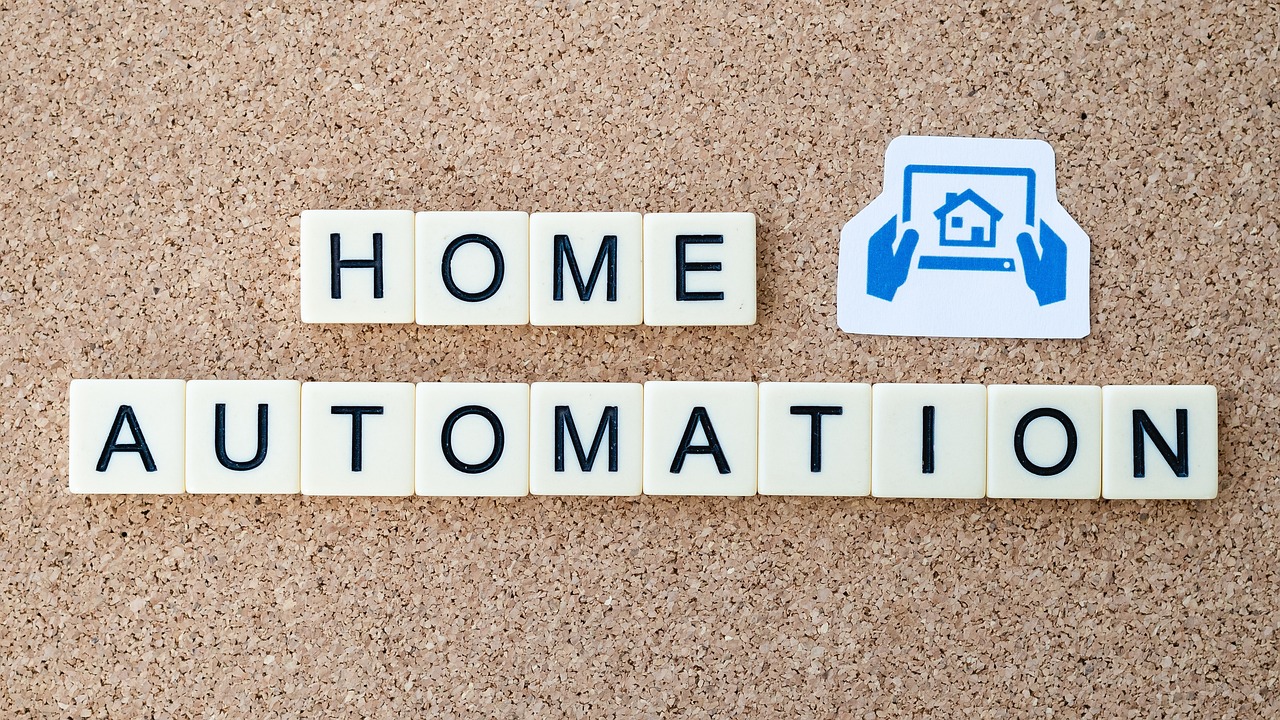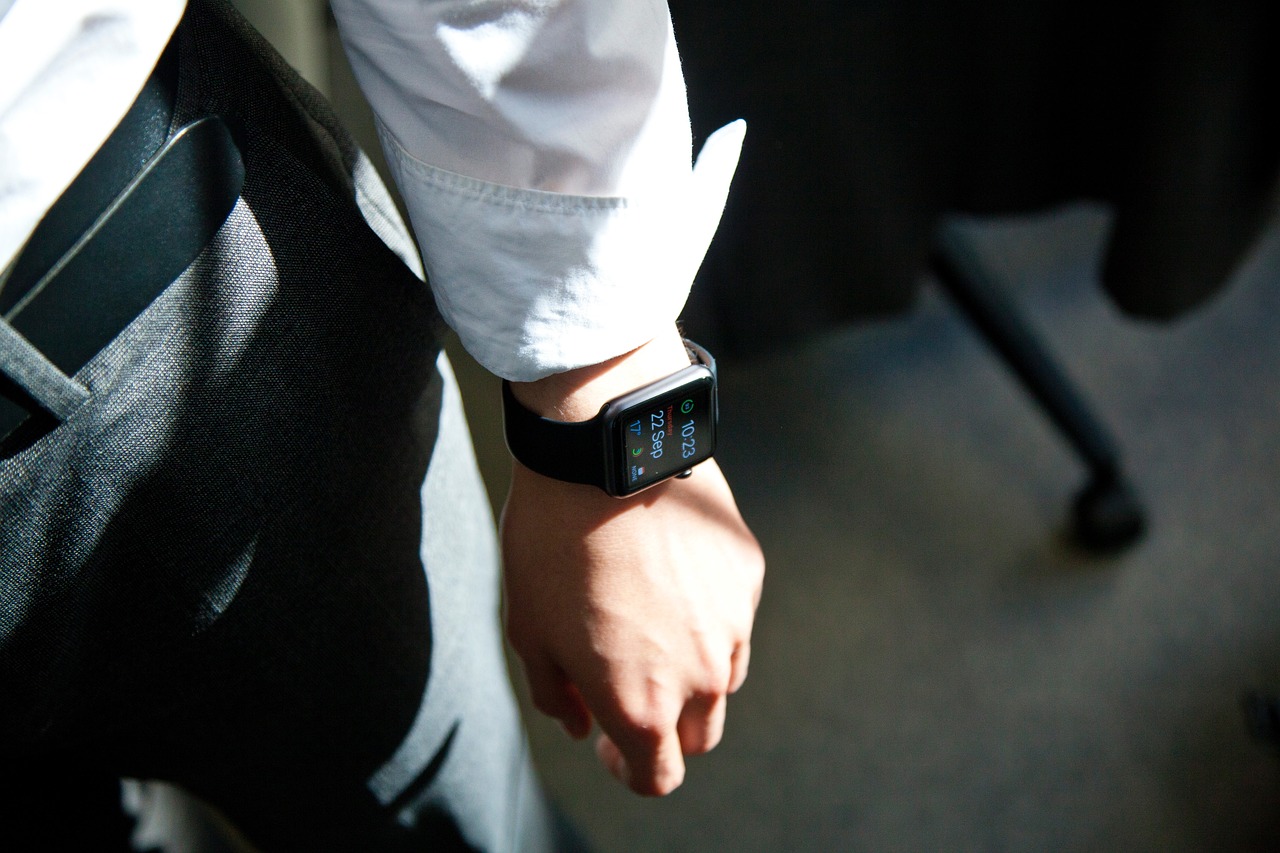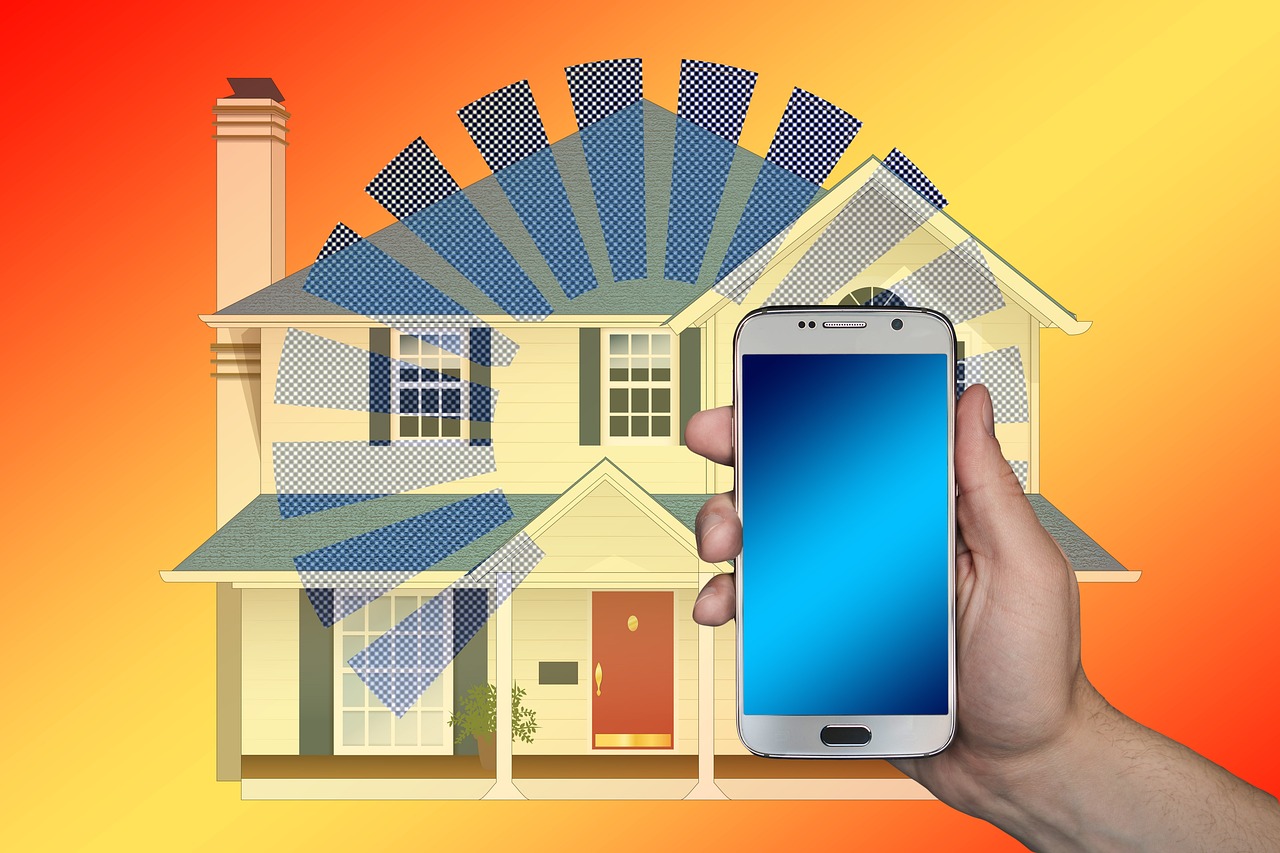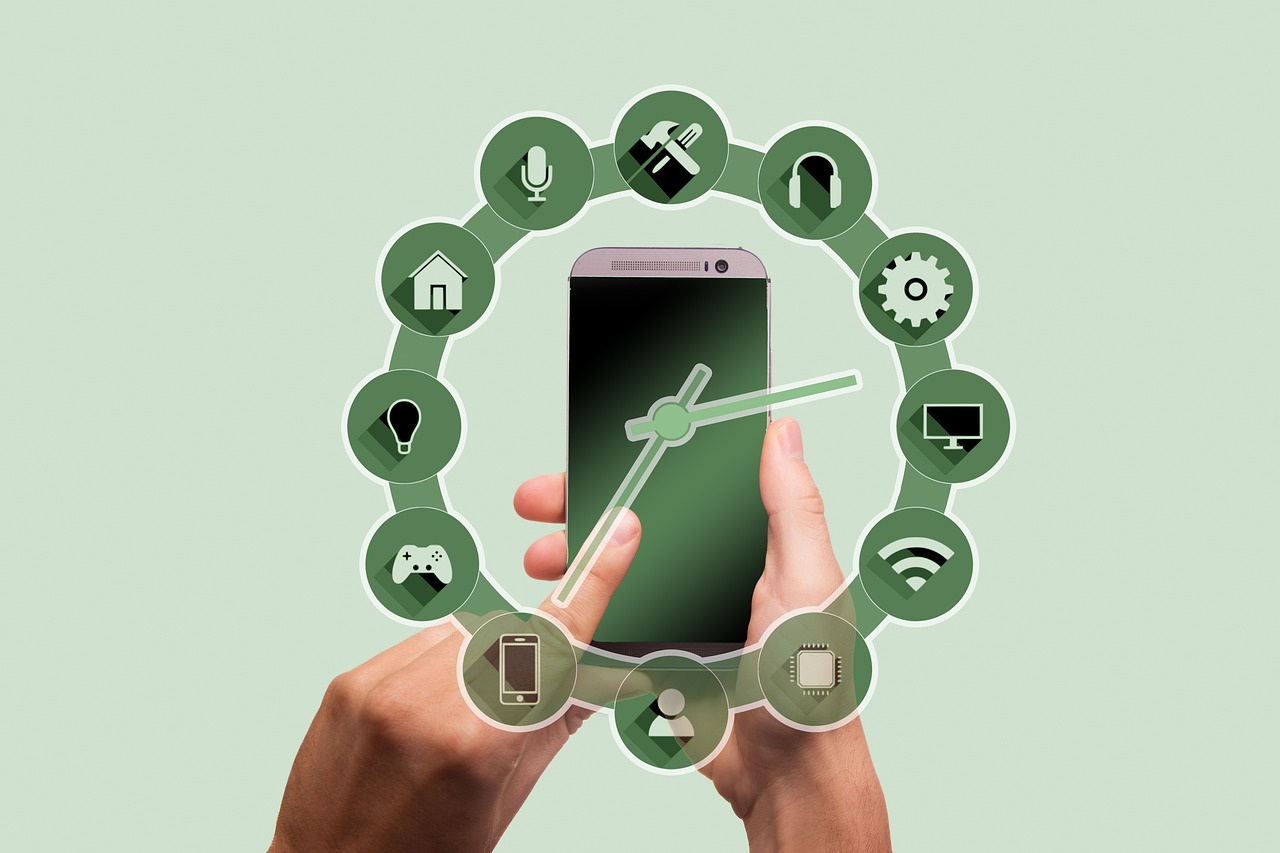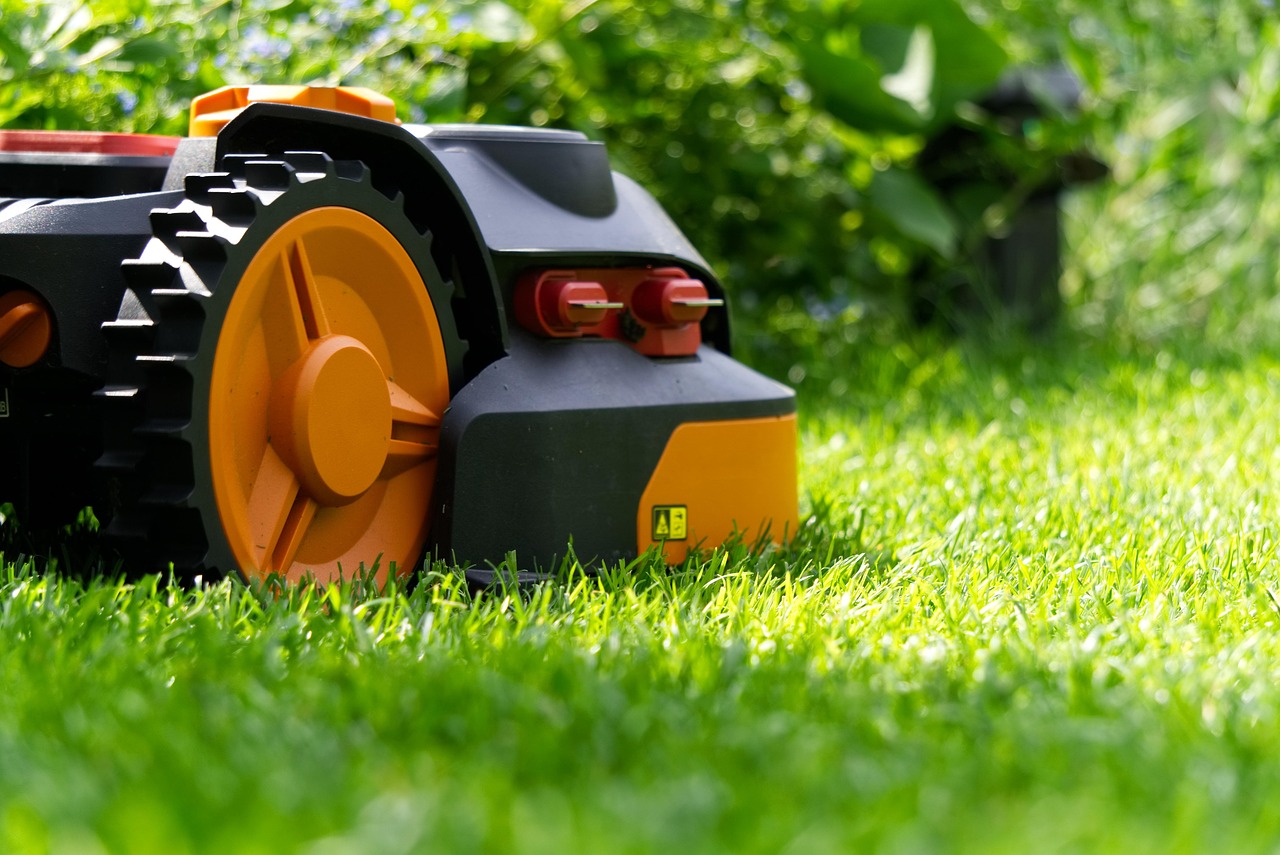This article delves into five innovative smart home devices designed to elevate your home’s convenience, security, and energy efficiency. By exploring their features and benefits, you’ll discover how these devices can work synergistically to create a seamless living experience.
1. Smart Thermostats
Smart thermostats are revolutionary devices that learn your heating and cooling preferences over time. They optimize energy usage, significantly reducing your utility bills while ensuring your home remains comfortable. With remote control capabilities, you can adjust the temperature from anywhere, tailoring your environment to suit your lifestyle.
2. Smart Security Cameras
Smart security cameras provide real-time monitoring and alerts, enhancing your home’s security. Equipped with features like night vision and motion detection, they offer peace of mind, knowing your property is under constant surveillance.
- Indoor vs. Outdoor Cameras: Understanding the differences is vital for effective surveillance, as each type serves unique purposes.
- Indoor Cameras: Often equipped with two-way audio and facial recognition, ideal for monitoring children or pets.
- Outdoor Cameras: Weatherproof and equipped with night vision, ensuring reliable performance in various conditions.
3. Smart Lighting Solutions
Smart lighting systems allow you to control your home’s ambiance effortlessly. From color-changing bulbs to automated schedules, they not only enhance aesthetics but also improve energy efficiency.
- Benefits: Enjoy convenience, energy savings, and customizable atmospheres for any occasion.
- Voice Assistant Compatibility: Many smart lighting solutions integrate with voice assistants like Alexa and Google Assistant for hands-free control.
4. Smart Plugs and Outlets
Transform regular devices into smart ones with smart plugs and outlets, enabling remote control and automation. They serve as an excellent entry point for beginners in home automation.
- Energy Monitoring: Some models track energy consumption to identify savings opportunities.
- Scheduling: Automate device operation, ensuring appliances run only when needed for enhanced efficiency.
5. Smart Home Hubs
Smart home hubs act as the central command for all your devices, simplifying management and improving interoperability among various brands and technologies.
- Importance: A hub integrates devices, allowing them to communicate effectively and providing a unified user interface.
- Popular Hubs: Explore various hubs that offer unique features and compatibility with a wide range of devices.
Conclusion
Investing in advanced smart home devices can significantly enhance your living experience. By understanding their features and benefits, you can create a more efficient, secure, and comfortable home tailored to your unique needs.

1. Smart Thermostats
Smart thermostats are revolutionizing the way we manage our home environments by learning our heating and cooling preferences. These advanced devices utilize machine learning algorithms to adapt to your lifestyle, ensuring that your home remains comfortable while simultaneously optimizing energy use. This not only enhances your comfort but also leads to significant reductions in utility bills.
One of the most remarkable features of smart thermostats is their ability to be controlled remotely. Using a smartphone app, you can adjust the temperature of your home from anywhere, whether you are at work or on vacation. This remote access allows for tailored comfort, as you can set your home to the perfect temperature before you arrive, ensuring a welcoming environment.
Additionally, many smart thermostats offer features such as geofencing, which detects when you are home or away and adjusts the temperature accordingly. This not only saves energy but also provides peace of mind, knowing that your home is being managed efficiently without constant manual adjustments.
Another significant benefit is the integration of smart thermostats with other smart home devices. For instance, they can work alongside smart lighting and security systems to create a cohesive home automation experience. By coordinating these devices, you can enhance energy efficiency further and improve your overall living experience.
In conclusion, investing in a smart thermostat is a smart choice for anyone looking to enhance their home’s energy efficiency and comfort. With features that adapt to your preferences and the convenience of remote control, these devices are a key component of a modern, efficient home.
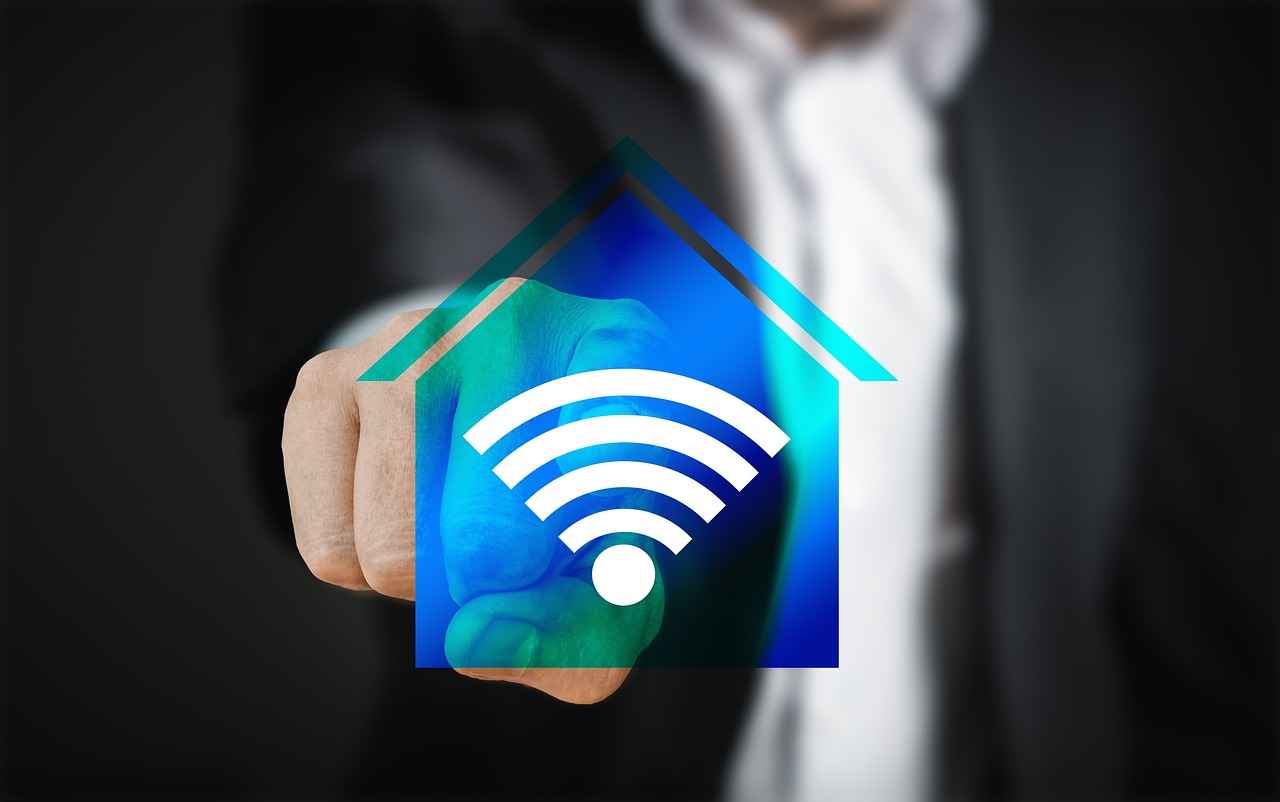
2. Smart Security Cameras
Smart Security Cameras have revolutionized home security by providing homeowners with enhanced monitoring capabilities and peace of mind. These devices are designed to keep an eye on your property in real-time, offering a range of features that cater to various security needs.
One of the standout features of smart security cameras is their ability to deliver real-time alerts. Whether it’s detecting movement or unusual sounds, these cameras notify you instantly via your smartphone or other connected devices. This immediate feedback allows you to respond quickly to potential threats, enhancing your home’s security.
In addition to motion detection, many smart cameras come equipped with night vision capabilities. This feature ensures that your property is monitored effectively even in low-light conditions, providing 24/7 surveillance. With high-definition video quality, you can clearly see what’s happening at any hour.
When it comes to choosing the right camera, understanding the differences between indoor and outdoor cameras is essential. Indoor cameras typically focus on monitoring activities within your home, often featuring two-way audio for communication. In contrast, outdoor cameras are built to withstand various weather conditions and may include features like wide-angle lenses to cover larger areas.
Another significant advantage of smart security cameras is their integration with other smart home devices. This capability allows for coordinated responses to security events. For example, if a camera detects motion, it can trigger outdoor lights to turn on or send alerts to other smart devices in your home.
| Feature | Indoor Cameras | Outdoor Cameras |
|---|---|---|
| Two-Way Audio | ✔️ | ❌ |
| Night Vision | ✔️ | ✔️ |
| Weatherproof | ❌ | ✔️ |
| Wide-Angle Lens | ❌ | ✔️ |
In conclusion, investing in smart security cameras is a wise decision for anyone looking to enhance their home’s security. With features like real-time monitoring, night vision, and seamless integration with other smart devices, these cameras can significantly improve your ability to protect your home and loved ones.
2.1 Indoor vs. Outdoor Cameras
Understanding the differences between indoor and outdoor cameras is crucial for effective surveillance in today’s smart homes. Each type of camera serves unique purposes and comes with specific features tailored for various environments, ensuring optimal security and monitoring capabilities.
Indoor cameras are designed primarily for indoor use, providing a safe and controlled environment for monitoring. These cameras often include features such as:
- Two-way audio: This allows homeowners to communicate with family members or pets while away from home.
- Facial recognition: This technology helps in identifying familiar faces, enhancing security by alerting you to any unknown individuals.
- Compact designs: Indoor cameras are typically smaller and more aesthetically pleasing, allowing them to blend seamlessly into home decor.
On the other hand, outdoor cameras are built to withstand various weather conditions and provide robust surveillance for the exterior of a property. Key features include:
- Weatherproofing: Outdoor cameras are designed to resist rain, snow, and extreme temperatures, ensuring reliable performance throughout the year.
- Night vision: Equipped with infrared technology, these cameras can capture clear footage even in low-light conditions, which is essential for nighttime security.
- Wide-angle lenses: Outdoor cameras often have broader fields of view, allowing for comprehensive coverage of outdoor spaces.
In summary, understanding the distinct functionalities of indoor and outdoor cameras is essential for creating a comprehensive security system. By selecting the right type of camera for each area of your home, you can enhance overall safety and peace of mind.
2.1.1 Features of Indoor Cameras
Indoor cameras have become a vital component of modern smart home security systems. They offer a range of features designed to enhance safety and provide peace of mind while you are away from home. One of the most significant advantages of indoor cameras is their two-way audio capability. This feature allows users to communicate with family members, pets, or anyone in the house remotely. Whether you want to check in on your children or give instructions to a pet, this functionality adds a layer of interaction that traditional cameras lack.
Another critical feature is facial recognition. This technology enables the camera to distinguish between familiar faces and strangers, sending alerts if an unknown individual is detected. This can be particularly useful for parents who want to ensure their children are safe or for those who might have visitors or caregivers in their home.
Moreover, many indoor cameras come equipped with motion detection sensors, which alert homeowners to any unusual activity in real-time. These alerts can be sent directly to your smartphone, ensuring that you are always informed about what is happening in your home.
To enhance usability, many models offer cloud storage options, allowing users to save and review footage at their convenience. This feature is essential for those who want to keep a record of events for security or monitoring purposes.
In addition to these features, many indoor cameras can be integrated with other smart home devices. This integration allows for a more cohesive smart home experience, where cameras can work in tandem with alarms, lights, and other security measures, creating a comprehensive safety net for your household.
In conclusion, indoor cameras are not just about surveillance; they are about creating a connected environment that prioritizes safety and convenience. With features like two-way audio, facial recognition, and motion detection, they provide a robust solution for monitoring your home and loved ones.
2.1.2 Features of Outdoor Cameras
Outdoor cameras are essential components of modern security systems, designed to provide comprehensive surveillance and peace of mind. These devices are built to withstand various weather conditions, ensuring they remain functional regardless of rain, snow, or extreme temperatures. Here are some key features that make outdoor cameras a valuable investment for property protection:
- Weatherproof Design: Most outdoor cameras are constructed with durable materials that resist water, dust, and UV rays, ensuring longevity and reliable performance.
- Night Vision Capabilities: Equipped with advanced infrared technology, outdoor cameras can capture clear images in low-light conditions, allowing for 24/7 surveillance.
- High Resolution: Many outdoor cameras offer high-definition video quality, providing detailed footage that can be crucial for identifying intruders or monitoring activity.
- Wide Field of View: With features like wide-angle lenses, outdoor cameras can cover larger areas, reducing the number of cameras needed for comprehensive surveillance.
- Motion Detection: These cameras are often equipped with motion sensors that trigger alerts and recording when movement is detected, enhancing security by capturing real-time events.
- Remote Access: Most outdoor cameras allow users to view live feeds and recorded footage via smartphone apps, providing convenience and control from anywhere.
- Two-Way Audio: Some models include built-in microphones and speakers, enabling users to communicate with visitors or deter intruders directly through the camera.
In summary, outdoor cameras are not just weatherproof; they are equipped with a range of features that enhance their effectiveness in protecting your property. Investing in a quality outdoor camera system can significantly increase your home security, ensuring you can monitor your surroundings at any time.
2.2 Integration with Smart Home Systems
Integration with Smart Home Systems has become a crucial aspect of modern home security solutions. Smart security cameras not only provide real-time monitoring but also enhance the overall functionality of your smart home ecosystem. By connecting seamlessly with other smart devices, these cameras facilitate coordinated responses to security events, significantly improving user convenience and peace of mind.
When integrated with smart home systems, security cameras can trigger automated actions across various devices. For instance, if a camera detects motion, it can automatically turn on smart lights in the vicinity, illuminating the area and potentially deterring intruders. This coordinated response not only enhances security but also ensures that homeowners are promptly alerted to any unusual activity.
Moreover, integrating smart security cameras with smart doorbells allows for enhanced monitoring of entry points. When someone approaches your door, the camera can send a notification to your smartphone, allowing you to view live footage and communicate with the visitor through two-way audio. This feature is particularly beneficial for those who want to manage deliveries or screen visitors without opening the door.
Additionally, many smart cameras are compatible with voice assistants like Amazon Alexa and Google Assistant. This compatibility allows users to control their cameras hands-free, making it easier to check feeds or adjust settings through simple voice commands. For example, saying “Show me the front door camera” can instantly display the camera feed on a connected smart display.
Furthermore, the integration of smart cameras with home automation systems enables users to create custom scenarios. For example, homeowners can set up routines where, at night, the cameras activate automatically, and the home enters a security mode, locking doors and turning on outdoor lights. This level of automation not only enhances security but also offers peace of mind, knowing that your home is protected even when you are away.
In conclusion, the integration of smart security cameras with other smart home devices is essential for maximizing home security and convenience. By leveraging these technologies, homeowners can create a cohesive and responsive security system that not only protects their property but also enhances their overall living experience.

3. Smart Lighting Solutions
In today’s fast-paced world, smart lighting solutions are transforming the way we illuminate our homes. These innovative systems not only provide convenience but also enhance the overall ambiance and energy efficiency of our living spaces. With features that allow for personalized lighting experiences, smart lighting is a must-have for any modern household.
3.1 Benefits of Smart Lighting
- Energy Efficiency: Smart lighting systems often use LED technology, which consumes significantly less power than traditional bulbs. Additionally, they can be programmed to turn off when not in use, further reducing energy costs.
- Customization: Users can easily adjust brightness and color settings to create the perfect atmosphere for various occasions, whether it’s a cozy movie night or an energetic party.
- Remote Control: With the integration of mobile apps, homeowners can control their lights from anywhere, ensuring they never come home to a dark house.
3.2 Compatibility with Voice Assistants
Many smart lighting solutions seamlessly integrate with popular voice assistants like Amazon Alexa and Google Assistant. This compatibility allows users to control their lighting through simple voice commands, making it even more convenient.
3.3 Automated Schedules
One of the standout features of smart lighting is the ability to set automated schedules. Homeowners can program their lights to turn on or off at specific times, enhancing security by simulating occupancy while they are away.
3.4 Mood Lighting
Smart lighting systems can also be adjusted to create specific moods. By changing the color temperature and brightness, you can easily shift from a bright, energizing light to a soft, relaxing glow, tailored to your needs at any moment.
Conclusion
In summary, smart lighting solutions offer a multitude of benefits that enhance both aesthetics and energy efficiency in the home. By investing in these advanced systems, you can enjoy greater control over your living environment and contribute to a more sustainable future.
3.1 Benefits of Smart Lighting
Smart lighting has revolutionized how we illuminate our homes, offering a multitude of advantages that enhance both the functionality and atmosphere of our living spaces. From energy efficiency to personalized ambiance, smart lighting solutions cater to a variety of needs and preferences.
One of the most significant benefits of smart lighting is its convenience. With the ability to control lights remotely via smartphone apps or voice commands, homeowners can easily adjust lighting settings without having to physically flip switches. This feature is particularly useful for those who frequently forget to turn off lights when leaving home or for individuals with mobility challenges.
Additionally, smart lighting contributes to energy savings. Traditional lighting systems can consume a substantial amount of electricity, but smart bulbs are designed to be more efficient. Many smart lighting options use LED technology, which not only lasts longer but also uses significantly less energy compared to incandescent bulbs. Furthermore, features like automated schedules and occupancy sensors ensure that lights are only on when needed, further reducing energy waste.
Another compelling advantage is the customization of your home’s atmosphere. Smart lighting systems allow users to choose from a wide range of colors and brightness levels, enabling them to create the perfect mood for any occasion. Whether it’s a cozy dinner, a lively party, or a relaxing evening, homeowners can easily adjust the lighting to match their desired ambiance. This level of personalization enhances the overall experience of living in the space.
Moreover, smart lighting can be integrated with other smart home devices, providing a seamless and cohesive smart home experience. For example, lights can be programmed to turn on when a security camera detects motion, or they can be set to dim when a home theater system is activated. This level of integration not only enhances security but also adds to the convenience of daily living.
In conclusion, the benefits of smart lighting extend beyond mere illumination. With its emphasis on convenience, energy efficiency, and customization, smart lighting is an essential component of a modern smart home. Embracing this technology can lead to a more enjoyable and sustainable living environment.
3.2 Compatibility with Voice Assistants
In today’s rapidly evolving smart home landscape, compatibility with voice assistants has become a pivotal feature for smart lighting solutions. Devices such as Philips Hue and LIFX can be easily integrated with popular voice assistants like Amazon Alexa and Google Assistant. This integration allows users to control their lighting with simple voice commands, enhancing the overall convenience and accessibility of smart home technology.
Hands-Free Control
Imagine walking into your home after a long day and simply saying, “Alexa, turn on the living room lights.” This hands-free control is not only convenient but also provides an added layer of accessibility for individuals with mobility challenges. Voice commands can also be used to adjust brightness levels, change colors, or set specific moods, making it easier to create the perfect atmosphere for any occasion.
Integration with Other Smart Devices
Moreover, the compatibility of smart lighting with voice assistants extends beyond just lighting control. These systems can be integrated with other smart devices, such as smart thermostats and security systems, creating a cohesive smart home environment. For instance, you can set up a command like, “Hey Google, movie time,” which could dim the lights, adjust the thermostat, and lock the doors all at once.
Automation and Routines
Another significant advantage of using voice assistants with smart lighting is the ability to set up automation and routines. Users can program their devices to respond to specific phrases or times of day. For example, saying “Good night” could trigger the lights to turn off and the security system to activate, ensuring your home is secure while you sleep.
In conclusion, the compatibility of smart lighting solutions with voice assistants not only enhances user experience through hands-free control but also promotes seamless integration with other smart home devices. This level of automation and convenience is essential for creating a modern, efficient living space.
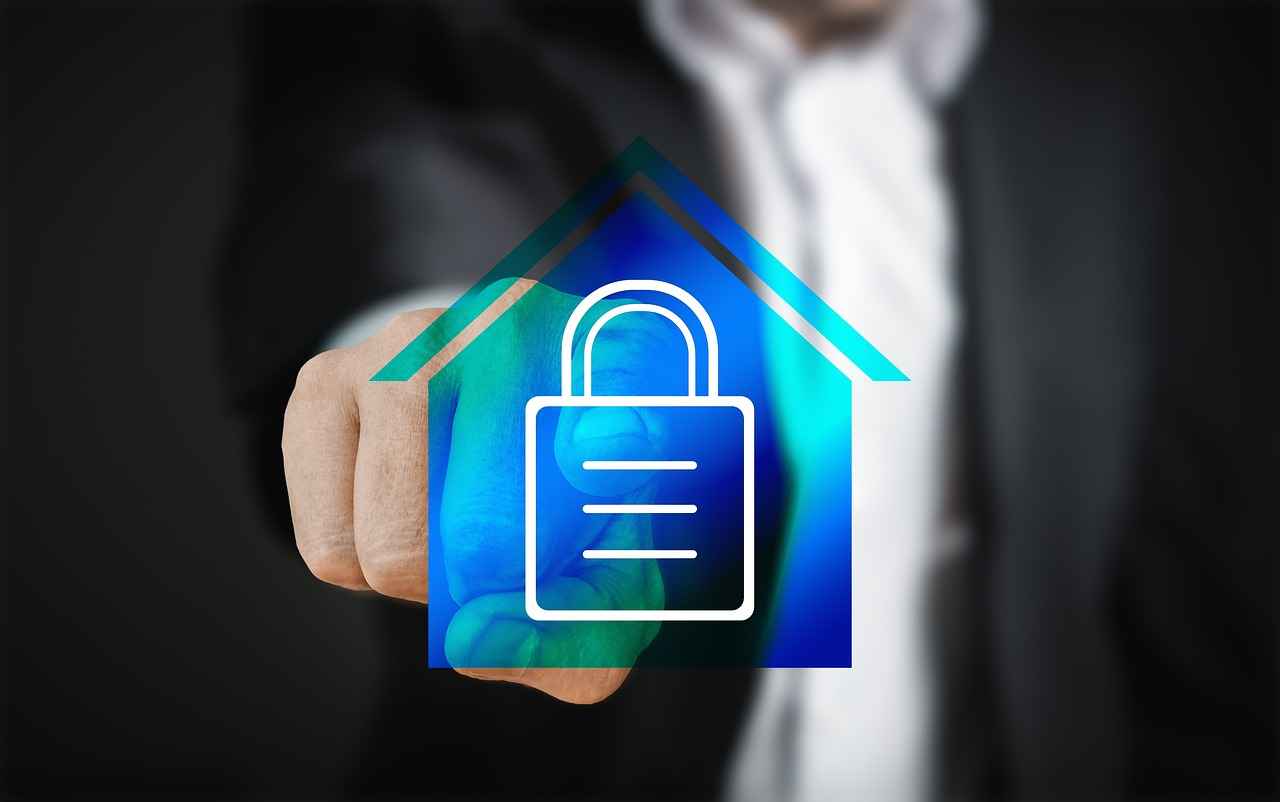
4. Smart Plugs and Outlets
Smart plugs and outlets are revolutionary devices that transform ordinary household appliances into smart devices, providing users with the ability to control them remotely and automate their functions. These devices serve as an ideal entry point for those new to home automation, offering a simple yet effective way to enhance daily living.
By connecting to your home Wi-Fi network, smart plugs allow you to control devices such as lamps, fans, and coffee makers from your smartphone or tablet. This remote access not only adds convenience but also promotes energy efficiency. For instance, you can switch off devices that you may have forgotten about, reducing unnecessary energy consumption.
Many smart plugs come equipped with energy monitoring features that provide insights into the power consumption of connected devices. This functionality enables users to track usage patterns and identify energy hogs, ultimately helping to lower electricity bills. By analyzing this data, you can make informed decisions about which devices to unplug or upgrade for better efficiency.
Another key feature of smart plugs is their ability to schedule device operation. You can set timers to automatically turn devices on or off at specific times, ensuring that appliances only run when needed. For example, you can program your coffee maker to start brewing in the morning before you wake up, or set your lights to turn on at dusk for added security.
Smart plugs can seamlessly integrate with other smart home devices and systems, such as voice assistants like Amazon Alexa and Google Assistant. This integration allows for voice control, enabling you to manage multiple devices with simple commands. For instance, you could say, “Alexa, turn off the living room lamp,” and the smart plug will respond accordingly.
Setting up smart plugs is typically straightforward, requiring minimal technical knowledge. Most devices come with user-friendly mobile apps that guide you through the installation process, making it accessible for everyone. With just a few steps, you can enjoy the benefits of a smarter home.
In conclusion, smart plugs and outlets offer an excellent introduction to home automation, providing convenience, energy savings, and enhanced control over your environment. As you explore the world of smart devices, these plugs can serve as a foundational element of a more connected and efficient home.
4.1 Energy Monitoring Features
In the realm of smart home technology, energy monitoring features in smart plugs have emerged as a game-changer for homeowners aiming to enhance their energy efficiency. These innovative devices not only allow you to control your appliances remotely but also provide valuable insights into your energy consumption patterns.
By utilizing energy monitoring, you can gain a comprehensive understanding of how much power each connected device uses. This information is crucial for identifying energy-hungry appliances that may be driving up your utility bills. For instance, you might discover that an older refrigerator or a rarely used heater consumes more energy than expected, prompting you to make informed decisions about usage or replacement.
Most smart plugs equipped with energy monitoring features come with user-friendly apps that display real-time data and historical consumption trends. This allows you to set energy-saving goals and track your progress over time. Moreover, many of these apps offer notifications that alert you when a device is using an unusually high amount of energy, enabling you to take immediate action.
Another significant advantage is the ability to create custom schedules for your devices. By programming your smart plugs to turn off during peak hours or when not in use, you can significantly reduce energy waste. This not only leads to lower energy bills but also contributes to a more sustainable lifestyle.
In summary, the energy monitoring features of smart plugs empower homeowners to take control of their energy consumption. By identifying high-energy devices and optimizing their usage, you can achieve significant savings and contribute to a greener planet. Embracing this technology is a step toward a more efficient and environmentally friendly home.
4.2 Scheduling and Automation
Smart plugs and outlets have revolutionized the way we manage our home appliances, particularly through their scheduling and automation features. These functionalities allow users to program devices to operate at specific times, making it easier to align appliance usage with daily routines.
One of the key benefits of scheduling is the ability to control when devices are active. For instance, you can set your coffee maker to start brewing at 7 AM, ensuring that your morning beverage is ready as soon as you wake up. Similarly, you can program lights to turn on at dusk, enhancing security and providing a welcoming atmosphere as you arrive home.
Moreover, scheduling contributes significantly to energy efficiency. By automating the operation of appliances, you can minimize energy waste. For example, devices can be set to turn off automatically when not in use, preventing unnecessary power consumption. This is particularly useful for devices that tend to be left on, such as chargers or fans.
In addition to energy savings, scheduling can also extend the lifespan of your appliances. By reducing the frequency of use during peak hours or when you are not at home, you can decrease wear and tear, ultimately saving you money on repairs and replacements.
Integrating smart plugs with home automation systems allows for even greater flexibility. Users can create routines that trigger multiple devices simultaneously. For instance, a “Good Night” routine could turn off all lights, lock doors, and shut down entertainment systems with a single command.
In conclusion, the scheduling and automation features of smart plugs not only enhance convenience but also play a crucial role in improving energy efficiency and appliance longevity. By leveraging these capabilities, homeowners can enjoy a smarter, more efficient living environment.
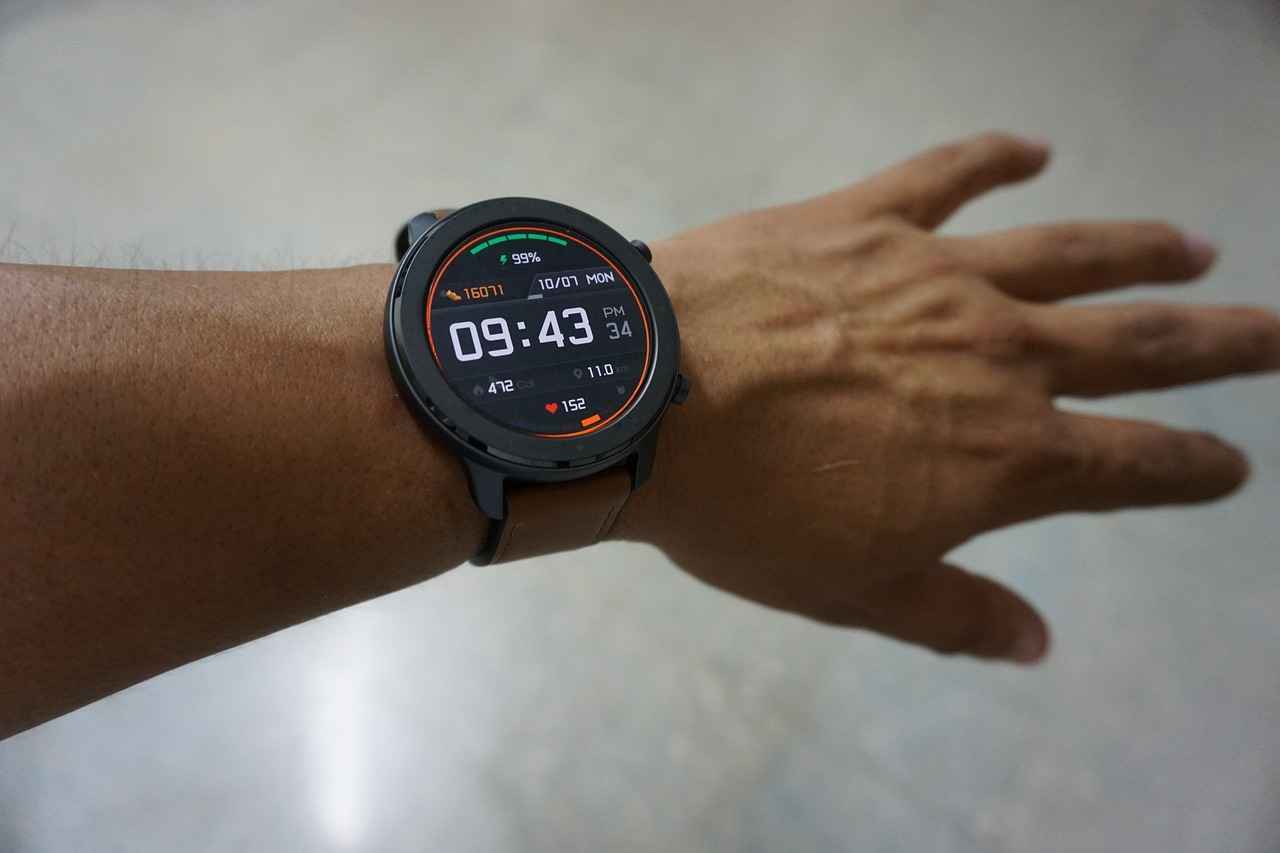
5. Smart Home Hubs
Smart home hubs are essential components of a modern smart home ecosystem, acting as the central control point for all your smart devices. They simplify the management of various technologies, enhancing interoperability among different brands. By connecting devices such as smart lights, thermostats, and security cameras, these hubs create a cohesive network that allows users to control their home from a single interface.
One of the primary advantages of using a smart home hub is the streamlined control it offers. Instead of juggling multiple apps for different devices, users can manage everything through one platform. This not only saves time but also reduces the complexity of home automation. For instance, with a smart home hub, you can set up routines that trigger multiple devices simultaneously, such as dimming the lights and adjusting the thermostat when you arrive home.
Moreover, smart home hubs enhance inter-device communication. Many smart devices are designed to work with specific ecosystems, but a hub can bridge the gap between different brands and technologies. This means you can integrate a wide variety of devices, ensuring that they work harmoniously together. For example, you can have your smart security camera send alerts to your smart speaker when it detects motion, allowing for immediate action.
Additionally, smart home hubs often come equipped with advanced features like voice control and automation capabilities. By integrating with voice assistants such as Amazon Alexa or Google Assistant, users can control their devices hands-free, making home management even more convenient. Furthermore, many hubs allow for the creation of complex automation scenarios that can enhance energy efficiency and security.
In conclusion, investing in a smart home hub can significantly elevate your home automation experience. By providing a unified control system and enabling seamless communication between devices, these hubs simplify the management of your smart home, making it more efficient and user-friendly.
5.1 Importance of a Hub
A smart home hub plays a pivotal role in the modern smart home ecosystem. By acting as the central control unit, it facilitates seamless communication between various smart devices, ensuring they work in harmony. This integration is essential for maximizing the functionality and efficiency of your home automation system.
One of the primary advantages of using a smart home hub is its ability to unify different devices from various manufacturers. Without a hub, devices may operate in isolation, limiting their potential. For instance, a smart thermostat may not communicate with smart lights or security systems, resulting in missed opportunities for automation. With a hub, these devices can share data and trigger actions based on specific conditions, such as adjusting the heating when the security system is armed.
Moreover, a smart home hub provides a single interface for user control. Instead of juggling multiple apps for different devices, users can manage all their smart home products from one centralized application. This convenience not only simplifies operation but also enhances the user experience.
Another significant benefit is the ability to create complex automation routines. For example, a user can set up a scenario where the lights dim, the thermostat adjusts, and the security cameras activate when they leave home. Such automation provides enhanced security, energy efficiency, and convenience.
In addition, many smart home hubs support voice control through popular virtual assistants, allowing users to operate their devices hands-free. This feature is particularly beneficial for individuals with mobility challenges or those who prefer a more streamlined approach to managing their home.
In conclusion, the importance of a smart home hub cannot be overstated. It not only integrates various smart devices but also provides a unified control interface and enables advanced automation capabilities. Investing in a reliable hub is essential for anyone looking to create a truly interconnected and efficient smart home.
5.2 Popular Smart Home Hubs
When it comes to creating a smart home, smart home hubs play a pivotal role in ensuring that all devices work together seamlessly. These hubs act as the central control unit, allowing users to manage various smart devices from a single interface. Below, we explore some of the most popular smart home hubs available today, highlighting their unique features and compatibility with a wide range of devices.
| Smart Home Hub | Key Features | Device Compatibility |
|---|---|---|
| Amazon Echo Plus | Built-in Zigbee hub, voice control with Alexa, music streaming | Compatible with thousands of smart devices including lights, locks, and cameras |
| Samsung SmartThings | Supports multiple protocols (Zigbee, Z-Wave, Wi-Fi), customizable automation | Works with a wide range of third-party devices and brands |
| Google Nest Hub | Voice control with Google Assistant, touchscreen display, smart home dashboard | Integrates with numerous smart devices, especially those compatible with Google Home |
| Apple HomePod | HomeKit integration, high-quality audio, Siri voice control | Compatible with HomeKit-enabled devices, focusing on security and privacy |
| Wink Hub 2 | Supports multiple protocols, user-friendly app, remote access | Works with a variety of smart devices, including lights, sensors, and cameras |
Each of these smart home hubs offers unique advantages, making it easier for users to build a cohesive smart home ecosystem. With features like voice control, automation capabilities, and extensive device compatibility, these hubs simplify the management of smart devices, enhancing the overall smart home experience.
In conclusion, selecting the right smart home hub is essential for maximizing the potential of your smart home. By choosing a hub that aligns with your specific needs and existing devices, you can create a more integrated and efficient home environment.

Conclusion
Investing in advanced smart home devices can significantly improve your living environment. By exploring their features and benefits, you can create a home that is not only more efficient but also secure and comfortable, tailored specifically to your personal needs. The integration of these devices can transform a traditional living space into a modern, smart home that enhances your daily life.
Smart home technology is rapidly evolving, offering a myriad of options to enhance convenience and control. Here are five advanced devices that can elevate your home’s potential:
- Smart Thermostats: These devices learn your heating and cooling preferences, adjusting automatically to optimize energy usage and reduce utility bills.
- Smart Security Cameras: With features such as night vision and motion detection, these cameras provide real-time monitoring, ensuring your home remains safe.
- Smart Lighting Solutions: Control your home’s ambiance with customizable lighting options that can be scheduled or adjusted remotely.
- Smart Plugs: Transform traditional appliances into smart devices, allowing for remote control and energy monitoring.
- Smart Home Hubs: Centralize control of all your smart devices, enhancing interoperability and simplifying management.
Each of these devices offers distinct advantages. For instance, smart thermostats not only provide comfort but also save money on energy bills. Smart security cameras enhance safety, while smart lighting can create the perfect atmosphere for any occasion. By integrating these technologies, you can achieve a seamless and efficient home experience.
In conclusion, understanding the capabilities of advanced smart home devices allows you to make informed decisions that enhance your lifestyle. By investing in these technologies, you can create a home environment that is not only efficient but also secure and comfortable. Embrace the future of living with smart home solutions tailored to your needs.
Frequently Asked Questions
- What are smart thermostats and how do they work?
Smart thermostats are devices that learn your heating and cooling preferences to optimize energy use. They can be controlled remotely via an app, allowing you to adjust your home’s temperature from anywhere, ensuring comfort and energy savings.
- How do smart security cameras enhance home security?
Smart security cameras provide real-time monitoring and alerts, featuring night vision and motion detection. They help you keep an eye on your property, giving you peace of mind whether you’re at home or away.
- What are the benefits of smart lighting solutions?
Smart lighting solutions allow you to control your home’s ambiance effortlessly. They offer energy savings, convenience, and customization options, letting you set the perfect mood for any occasion.
- How do smart plugs contribute to energy efficiency?
Smart plugs enable you to control ordinary devices remotely and automate their operation. Many also provide energy monitoring features, helping you track usage and identify ways to save on your utility bills.
- Why is a smart home hub important?
A smart home hub acts as the central control point for all your smart devices, ensuring they communicate effectively. This simplifies management and enhances the interoperability of different brands and technologies.
